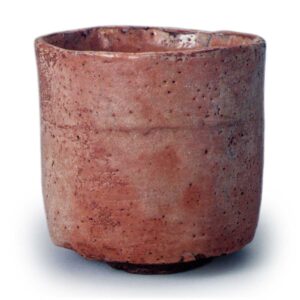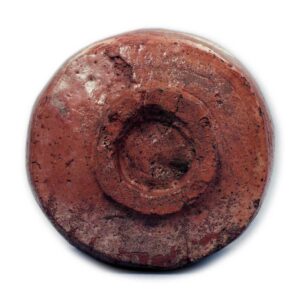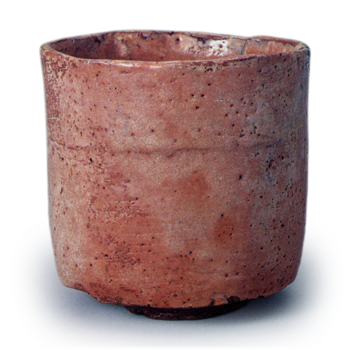

Height 10.1cm, mouth diameter 9.9cm, base diameter 4.8cm
On the front of the lid of the inner box, the writer of “Koetsu tsutsu chawan (tea bowl)” in gold powder script is Mitani Sochin, and on the back of the lid of the outer box, Yabuuchi Teruo inscribed “Powder script by Sochin, 追銘弁財天 by Yafu Teruo (flower seal)”. Mitani Soshin was a disciple of Ito Togai, a native of Kyoto, and served the Asano family in Geishu as a supporter with 200 koku. Teruo was the 11th generation of the Yabuuchi family. According to the accompanying letter, this tea bowl once belonged to Goto San’emon Soban, a wealthy merchant and eccentric in Kyoto, and when Seo Munehaku, also known as an eccentric, made a request for it, Mitani Munechin interceded and gave it to him for 20 gold pieces. Mune Ban, Mune Park, and Mune Zhen were all students of Kakusai Haraso, and were acquaintances. According to the zodiac sign on the accompanying letter, this tea bowl was transferred in the 11th year of the Kyoho Era, at the age of noon.
It is only recently that this tea bowl has come into the author’s possession, and it has been unknown to the world for a long time. However, it is not too much to say that it is the most excellent work among Koetsu tea bowls, although it is a rather small cylindrical tea bowl.
It is a cylindrical tea bowl made of red clay, and the almost flat mouth rim is cut thickly and thinly in a manner similar to “Fujisan,” and the cylindrical body rises straight, with a horizontal spatula on one side of the upper part of the body, and it slightly narrows from the hem of the body to the waist.
The most remarkable feature of this tea bowl is the trace of the chisel from the high stand to the side of the stand, which is the closest to the “Fujisan” style, as the artist’s spirit of seeking change with a sense of power is clearly felt.
The yuzu applied to the entire interior and exterior has a cloudy color in some areas, while the well-melted areas are highly transparent, clearly indicating that the clay and glaze were of the same quality as those used for “Bishamondo,” “Seppou,” and “Otogozen. There are two or three longitudinal defects from the mouth to the bottom.



